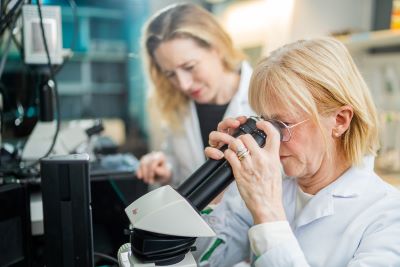Prof. Anna Herland and Dr. Erica Zeglio are awarded grants from the Swedish Research Council (Vetenskaprådet).
- Refining neurovascular in vitro models (Prof. Anna Herland, co PIs: Ryan Hicks (AstraZeneca), Xenia Nikolakopoulou (KI), Jane Synnergren (University of Skövde))
All new drug candidates need to be evaluated for central nervous system (brain) penetration and sideeffects. Unfortunately, and especially for new drug types, the testing methods do not show how the drugs will work in humans. Here, we focus on developing and validating human functional Organ-on-Chip models of the brain and its vasculature. In this work, which is a collaboration with AstraZeneca around the theme to reduce and refine animal experiments, we especially focus on human specific drugs including viral vectors and protein or peptide-based drugs.
2. 2D and 3D in vitro models with organic electronic interfaces to electrogenic cells (PI: Prof. Anna Herland, co PIs: Prof. Max Hamedi (KTH), Prof. Frank Nikalus (KTH) and Dr. Erica Zeglio (KTH))
Electrodes are needed to stimulate and measure on electrically active tissues, such as the heart and brain. Electrodes are specifically used in electrophysiology, the studies of electrically active cells outside the body. This is an essential method in drug development and toxicity studies.
The main goal in this project is to create new methods to carry out electrophysiology in 3D and microfluidic cell culture, so called Organ-on-Chips. We will combine the development of new polymer materials, new transistor designs, and new fabrication methods for electroactivity measurements in 2D and 3D systems.
3. Biodegradable electronic polymers: from device components to in vivo monitoring technologies (VR Starting Grant, Dr. Erica Zeglio)
Temporary implants are currently based on electronics that dissolve in contact with water, limiting their application in contact with (water-based) biological fluids. With the project “Biodegradable electronic polymers: from device components to in vivo monitoring technologies”, the Team led by Dr. Zeglio will investigate device components that are stable in contact with water and degrade into nontoxic products by the action of living cells.











